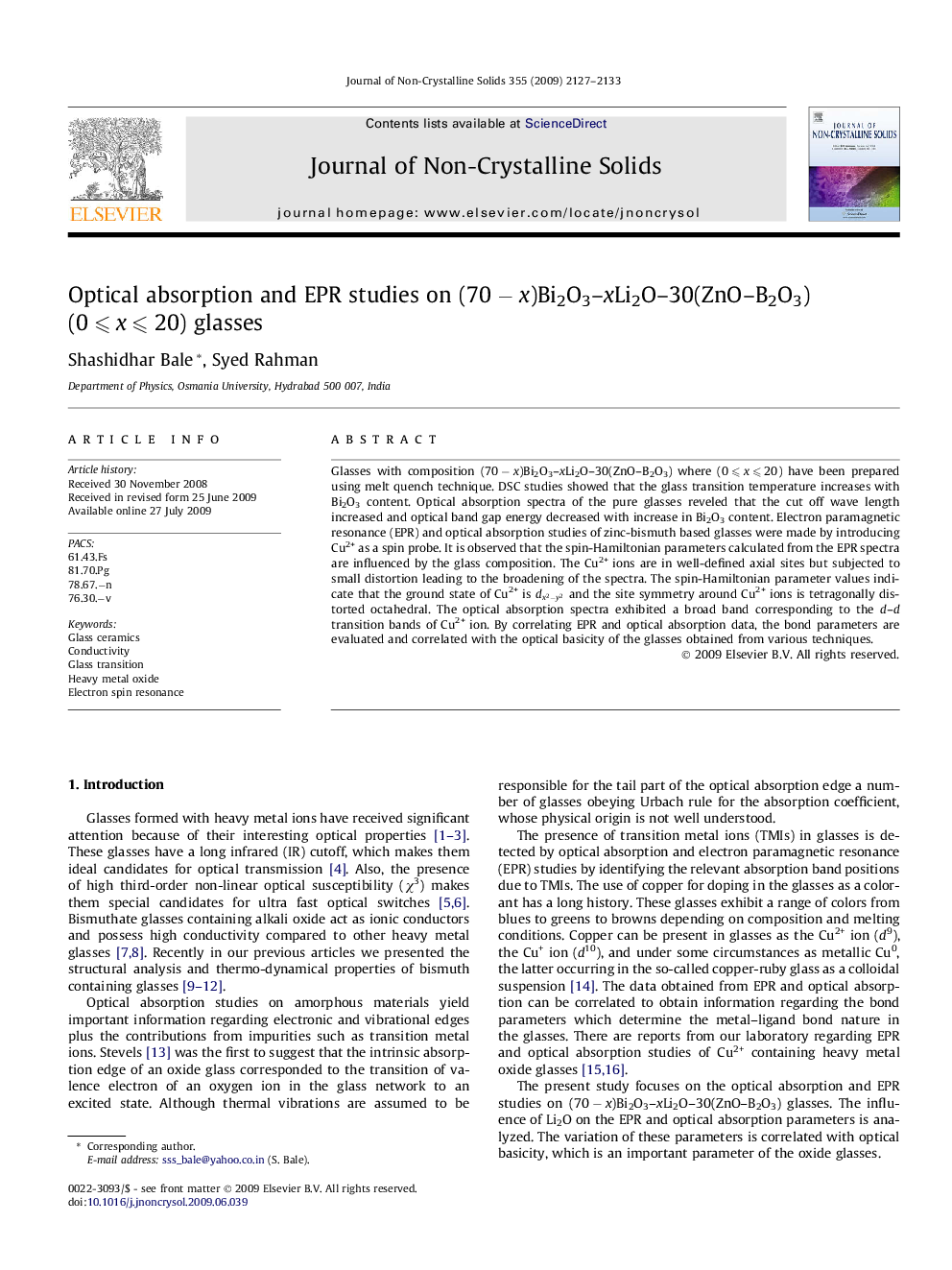| Article ID | Journal | Published Year | Pages | File Type |
|---|---|---|---|---|
| 1482240 | Journal of Non-Crystalline Solids | 2009 | 7 Pages |
Glasses with composition (70 − x)Bi2O3–xLi2O–30(ZnO–B2O3) where (0 ⩽ x ⩽ 20) have been prepared using melt quench technique. DSC studies showed that the glass transition temperature increases with Bi2O3 content. Optical absorption spectra of the pure glasses reveled that the cut off wave length increased and optical band gap energy decreased with increase in Bi2O3 content. Electron paramagnetic resonance (EPR) and optical absorption studies of zinc-bismuth based glasses were made by introducing Cu2+ as a spin probe. It is observed that the spin-Hamiltonian parameters calculated from the EPR spectra are influenced by the glass composition. The Cu2+ ions are in well-defined axial sites but subjected to small distortion leading to the broadening of the spectra. The spin-Hamiltonian parameter values indicate that the ground state of Cu2+ is dx2-y2dx2-y2 and the site symmetry around Cu2+ ions is tetragonally distorted octahedral. The optical absorption spectra exhibited a broad band corresponding to the d–d transition bands of Cu2+ ion. By correlating EPR and optical absorption data, the bond parameters are evaluated and correlated with the optical basicity of the glasses obtained from various techniques.
